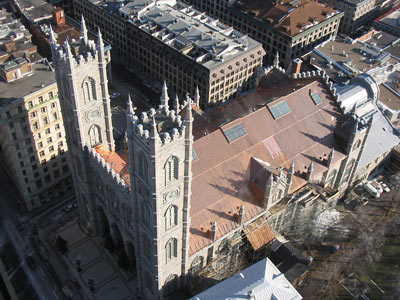Mankind's First Metal, Still Our Most Useful
Copper continues to be the element we can't live without
Few materials, natural or manmade, can match the contribution copper has made across the arc of human civilization.
Copper was the first metal used by mankind at the beginning of recorded history. Its principal alloy, bronze, ushered in the age of metals and machinery, enabling our modern world.
Electricity, electronics and computers-the key components of progress today and for the foreseeable future, all rely on copper circuitry.
Electrical manufacturing turns to copper for its three major properties-ductility, malleability and conductivity. Because copper excels in all three areas, it has become the benchmark for most types of wiring.
Whether in its natural state or alloyed with other elements, copper is also the quality standard when it comes to construction materials from plumbing pipe to architectural roofing.
Millions of miles of dependable, long-lasting copper pipe provide water to people around the globe. Copper plumbing systems require no maintenance and are so reliable that they are expected to last the life of the building.
Another plumbing application that benefits from copper is fire sprinkler systems. Unlike plastic pipe, copper will not burn or emit toxic fumes when exposed to flame, and it retains its integrity even in extreme temperatures-up to 2,000 degrees Fahrenheit.
Architecture is an area where copper shines, literally and figuratively. Many of the world's greatest structures are crowned with copper roofs. Some recent examples include Canada's largest and oldest cathedral, the Basilica of Notre Dame; the renowned and renovated Plaza Hotel in New York; and the ongoing expansion of Princeton University's hallowed halls of education.
Architects, builders, and facility owners and managers choose copper for good reasons: Copper typically offers the highest durability among competing materials, which translates into the lowest maintenance cost-along with green-building advantages of maximum sustainability and recyclability-over a lifetime of installed service.
Copper's superior conductivity and thermal transfer capability are critical in improving the energy efficiency of today's buildings and homes. Energy-saving products like high-efficiency motors, direct exchange geothermal heat pumps and solar collectors, depend on advanced copper tubing and wiring to provide higher efficiencies and longer product life.
As notable as these attributes may be, copper provides us with more important benefits. Copper sustains life itself, as a critical nutritional component in our diet and as an irreplaceable element helping to regulate the functioning of our bodies.
Copper is also a valuable defense against potentially life-threatening disease. Pure copper and uncoated copper alloys are inherently lethal to bacteria and are now recognized by the U.S. Environmental Protection Agency as antimicrobial materials-the first time EPA has granted antimicrobial registration to a metal.
As a result, architects, interior designers and developers of hospitals and public facilities are being encouraged to specify copper and copper alloys for frequently touched surfaces installed in the buildings they help to create.
One day copper, the metal that has been instrumental throughout our history, may be part of almost everything we see or touch in our everyday lives-protecting us from harm while benefitting us in innumerable other ways. Cu
Also in this Issue:
- Las Vegas CityCenter a 'No Sweat' Building Project
- HVAC in a Bottle
- No Mystery to Copper-clad Exterior For New GA Nanotechnology Center
- Mankind's First Metal, Still Our Most Useful
- 2009 North American Copper in Architectural Awards Program Draws Numerous Entries

 La basilique Notre-Dame de Montreal
La basilique Notre-Dame de Montreal